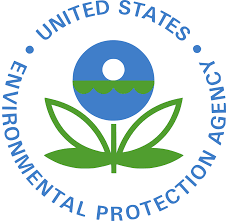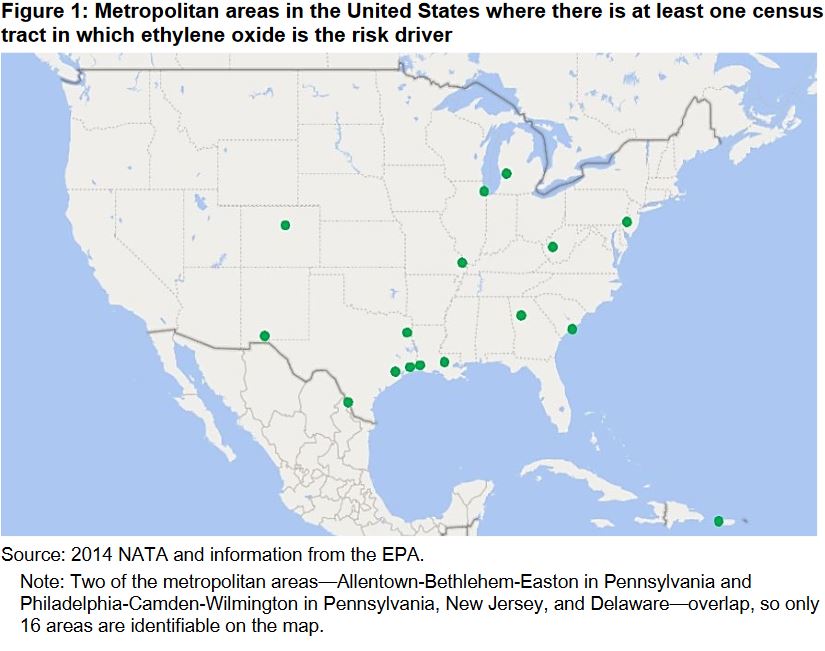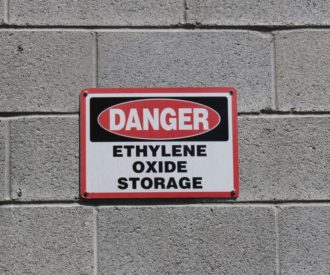Brenda Goodman is a senior news writer for WebMD. Andy Miller is editor and CEO of Georgia Health News.
A new government report has rebuked the EPA for failing to tell residents about the health risks they face by living near facilities that release cancer-causing ethylene oxide gas.
In 2018, the EPA made a list of 25 “high priority” facilities in the U.S. that emit ethylene oxide (also known as EtO) into the environment at levels that exceeded the agency’s threshold for acceptable lifetime cancer risk.

According to a new ‘‘management alert’’ from the EPA’s Inspector General, the agency has met with residents around only nine of those facilities. In some cases, those meetings — in Georgia and Illinois — came only after furious residents demanded more government action.
The report comes just as a federal district judge has issued a temporary restraining order against Cobb County’s fire marshal and building manager for blocking the operations of a commercial sterilization facility the Atlanta suburbs.
The restraining order allows the company, Sterigenics, to resume full operations at least temporarily. The FDA and the U.S. Department of Health and Human Services also urged the state to allow another Georgia sterilizer, BD, to resume full operations in Covington, a city in Newton County.

Both companies say their services are needed to respond to the COVID-19 pandemic and the resulting increase in demand for sterile medical equipment.
The 2018 EPA report determined that residents living in 109 census tracts in 17 metro areas around the nation faced unacceptable cancer risks from breathing small amounts of ethylene oxide in outdoor air. The EPA says cancer risks from airborne toxins like ethylene oxide are unacceptable when they rise above 100 cases of cancer for every million people exposed over 70 years.
The agency posted the report on its website but did not issue a press release. The EPA did tell states about its findings, But some, like Georgia, took no action to inform residents, until reporters broke the story locally. People living in some affected areas still have had no guidance from their state or the federal government about the issue.
State Rep. Erick Allen, a Smyrna Democrat who has sponsored legislation to increase regulation over sterilizing plants using ethylene oxide, expressed frustration with the timing of the report. “The time for transparency and education was years ago,’’ he said.
“It infuriates me that they continue to hide in the shadows of paperwork and more and more studies yet they never do anything to inform communities so they can at least have a fighting chance to save their families,” said Cindy Jordan, a member of the grass-roots group Say No to EtO, formed to fight ethylene oxide use at the BD plant.
The Inspector General’s report says public meetings are planned in 2020 for residents living around 5 of the remaining facilities:
- Edwards Lifesciences, a commercial sterilizer in Anasco, PR
- B Braun Medical, a commercial sterilizer in Allentown, PA
- Union Carbide Corp, a chemical manufacturer in Institute, WV
- Croda, a chemical manufacturer, in New Castle, DE
- Union Carbide Corp a chemical manufacturer in South Charleston, WV
There are still no plans by the EPA to inform residents living near 11 other facilities, in Texas, Louisiana, New Mexico, and Wisconsin. The facilities in Texas and Louisiana are responsible for some of the highest emissions of ethylene oxide in the nation. These are:
- BCP Ingredients, a chemical manufacturer in St. Gabriel, LA
- Union Carbide, a chemical manufacturer in Taft, LA
- Huntsman, a chemical manufacturer in Port Neches, LA
- Eastman Chemical Texas Operations in Longview, TX
- Tamnico US, a chemical manufacturer in St. Gabriel, LA
- Sasol Chemicals, chemical manufacturer, Westlake, LA
- Air Products Performance Manufacturing, chemical manufacturer in Reserve, LA
- Midwest Sterilization Corp., commercial sterilizer, Laredo, TX
- Shell Technology Center, chemical manufacturer, Houston, TX
- Sterigenics Santa Teresa, commercial sterilizer, Santa Teresa, NM
- Air Products Performance, chemical manufacturer, Milton, WI
The Inspector General’s office says it recommended that the EPA improve its risk communication efforts in affected neighborhoods and communities.
The EPA responded by saying that it would do more “refined investigation” of risks in these areas and based on these reports, support communication efforts by states.

The Inspector General’s office says the agency’s plan of correction was not acceptable. Thus, the issue remains unresolved.
After the Inspector General’s report was released, EPA administrator Andrew Wheeler issued his own statement saying that he had been surprised by the report’s conclusions.
“The tone and substance of this report indicates a disconnect in the US EPA IG’s office,” said Administrator Wheeler. “Most surprising is that in our final meeting with the IG’s office on this matter they provided no indication that there would be any unresolved issues. As a result, we are formally requesting the EPA IG rescind the report so it can be appropriately updated.”


